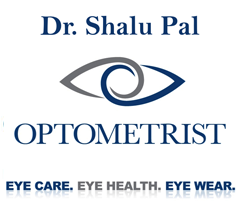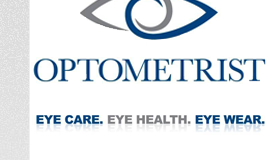Contents |
Hyperopia and Farsightedness
Introduction
The medical term for farsightedness or longsightedness is "hyperopia". "Hypermetropia", an older term, is not used much today.
Hyperopia (hi-per-OH-pee-uh) is a common condition that affects about ten percent of the adult population, worldwide. Interestingly, the percentage of the global population with hyperopia is decreasing overall, because myopia (nearsightedness) is increasing as education increases, along with the amount of reading and computer use.
Hyperopia causes difficulty in focusing on near objects or printing; hyperopes can usually see better in the distance than up close, depending on the amount, but in some cases can cause distance blur as well.
One way to think of hyperopia is that the eyeball is a little too short from front to back, resulting in a focus behind the retina instead of exactly on it. There is a mismatch between the optical surfaces and focusing system with the length of the eye, which causes blurred vision, especially up close.
Hyperopia can be somewhat tricky to catch, especially in young people, because they can compensate for it by using their focusing muscles to change the shape of the inner lens of the eye. This is called accommodation, which increases the eye’s overall power, bringing the image to a sharp focus on the retina. The extra focusing needed can result in eyestrain and symptoms such as a “pulling” sensation, headaches, fatigue, (especially when reading) aching eyes, tearing and poor hand-eye coordination.
Sometimes, the amount of hyperopia is too much for accommodation to be effective; in some cases, over-accommodation can cause the eyes to cross, a condition known as strabismus. In severe cases, strabismus can cause double vision, so the brain learns to ignore images from the crossed eye, causing the vision in that eye to develop poorly, which is known as amblyopia. For this reason, children should have a thorough vision examination by the age of three.
It is also possible for hyperopia to occur in combination with astigmatism, which causes light to focus differently from one orientation to the other; this condition causes blur at all distances and, unless it is very mild, requires correction with spectacles or contact lenses.
While young people with mild hyperopia may not experience blurred vision, the eye gradually loses the ability to accommodate, resulting in blurred near vision. Adults usually begin to notice this at about the age of 40 or so.
It is common for infants to have some degree of hyperopia, which decreases during the first years of life as the eye grows and becomes longer. If the eye becomes too long for its focal length, we begin to develop myopia (nearsightedness).
Testing
A thorough vision examination includes testing for refractive errors such as hyperopia and myopia, as well as astigmatism. Sometimes these tests will be done after using eyedrops which temporarily relax the accommodative system to make it easier to unmask hyperopia that the focusing system may be compensating for.
Treatment
In mild hyperopia, no treatment may be necessary, although the child should have vision exams each year, as vision changes rapidly at that age. In moderate to high hyperopia, the eyecare practitioner may prescribe eyeglasses which help the eyes to focus, which might include a bifocal so the child will have clear vision both in the distance and for reading.
Correction of hyperopia may also be achieved with contact lenses; as an adult, refractive surgery can be considered as an option.






